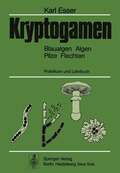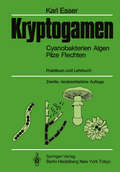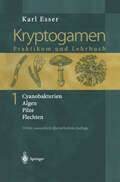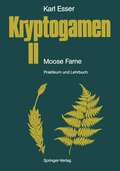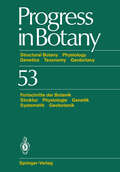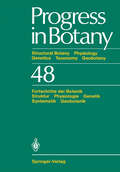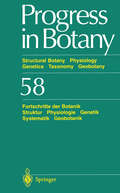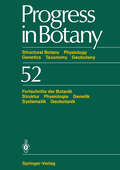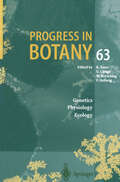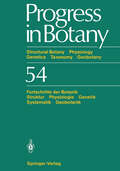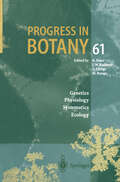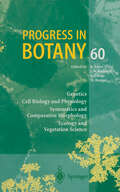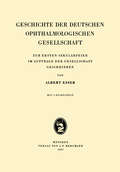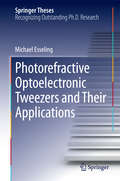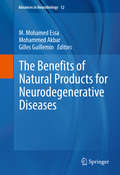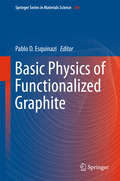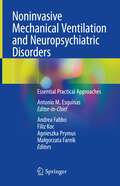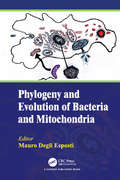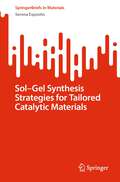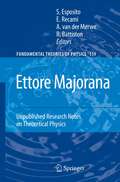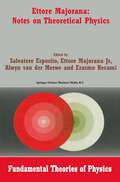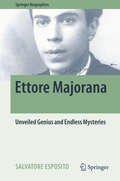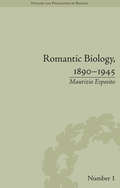- Table View
- List View
Kryptogamen: Cyanobakterien Algen Pilze Flechten Praktikum und Lehrbuch
by Karl Esser"Der ist aber nicht nur ein Praktikumsbuch, sondern auch ein Lehrbuch, das seinen besonderen Wert durch einen sehr ausführlichen Pilzteil erhält, wie er in dieser Form in keinem vergleichbaren Lehrbuch dargestellt ist. Einer besonderen Empfehlung bedarf dieses Buch nicht, es ist für jeden Biologiestudenten (und auf diesem Gebiet Lehrenden) eine Notwendigkeit." (Biologie in unserer Zeit)
Kryptogamen 1: Cyanobakterien Algen Pilze Flechten Praktikum und Lehrbuch
by Karl EsserDie Neuauflage dieser erfolgreichen Einführung in die Kryptogamen-Kunde bietet wieder die bewährte Kombination aus Lehrbuchtext und Übungsanleitungen. In der Verknüpfung von theoretischem und technisch-methodischem Teil wird dem Lernenden eine moderne Übersicht über die Morphologie, Anatomie und Fortpflanzung der Blaualgen, Algen, Pilze und Flechten gegeben, wobei im praktischen Teil die Kryptogamen in der Reihenfolge ihrer taxonomischen Einordung behandelt werden. Das Buch wendet sich nicht nur an Studenten und Hochschullehrer sondern auch an Lehrer der gymnasialen Oberstufe.
Progress in Botany: Stuctural Botany Physiology Genetics Taxonomy Geobotany / Fortschritte der Botanik Struktur Physiologie Genetik Systematik Geobotanik (Progress in Botany #53)
by Karl EsserThis seris keeps scientists and advanced students specialized on a particular subject informed of the latest developments and results in all different areas of botany. The present volume includes reviews on structuralbotany, physiology, genetics, taxonomy, geobotanic, as well as a contribution treating seed dispersal.
Progress in Botany: Structural Botany Physiology Genetics Taxonomy Geobotany / Fortschritte der Botanik Struktur Physiologie Genetik Systematik Geobotanik (Progress in Botany #48)
by Karl EsserProgress in Botany (Progress in Botany #58)
by Karl EsserWith one new volume each year, this series keeps scientists and advanced students informed of the latest developments and results in all areas of botany.The present volume includes reviews on structural botany, plant taxonomy, physiology, genetics and geobotany.
Progress in Botany: Structural Botany Physiology Genetics Taxonomy Geobotany/Fortschritte der Botanik Struktur Physiologie Genetik Systematik Geobotanik (Progress in Botany #52)
by Karl EsserProgress in Botany: Genetics. Physiology. Ecology (Progress in Botany #63)
by Karl EsserWith one volume each year, this series keeps scientists and advanced students informed of the latest developments and results in all areas of the plant sciences.The present volume includes reviews on genetics, cell biology, physiology, comparative morphology, ecology and vegetation science.
Progress in Botany / Fortschritte der Botanik: Structural Botany Physiology Genetics Taxonomy Geobotany / Struktur Physiologie Genetik Systematik Geobotanik (Progress in Botany #54)
by Karl EsserWith one new volume each year, this series keeps scientists and advanced students informed of the latest developments and results in all areas of botany. The present volume in- cludes reviews on structural botany, taxonomy, geobotany, plant physiology, genetics, and floral ecology.
Progress in Botany: Genetics Physiology Systematics Ecology (Progress in Botany #61)
by K. Esser J. W. Kadereit U. Lüttge M. RungeWith one volume each year, this series keeps scientists and advanced students informed of the latest developments and results in all areas of the plant sciences. The present volume includes reviews on genetics, cell biology, and vegetation science.
Progress in Botany: Genetics Cell Biology and Physiology Systematics and Comparative Morphology Ecology and Vegetation Science (Progress in Botany #60)
by K. Esser J. W. Kadereit U. Lüttge M. RungeWith one volume each year, this series keeps scientists and advanced students informed of the latest developments and results in all areas of the plant sciences.The present volume includes reviews on genetics, cell biology, physiology, comparative morphology, systematics, ecology and vegetation science.
Geschichte der Deutschen Ophthalmologischen Gesellschaft: Zur Ersten Säkularfeier im Auftrage der Gesellschaft Geschrieben
by Albrecht EsserPhotorefractive Optoelectronic Tweezers and Their Applications (Springer Theses)
by Michael EsselingIn the never-ending quest for miniaturization, optically controlled particle trapping has opened up new possibilities for handling microscopic matter non-invasively. This thesis presents the application of photorefractive crystals as active substrate materials for optoelectronic tweezers. In these tweezers, flexible optical patterns are transformed into electrical forces by a photoconductive material, making it possible to handle matter with very high forces and high throughput. Potential substrate materials’ properties are investigated and ways to tune their figures-of-merit are demonstrated. A large part of the thesis is devoted to potential applications in the field of optofluidics, where photorefractive optoelectronic tweezers are used to trap, sort and guide droplets or particles in microfluidic channels, or to shape liquid polymers into optical elements prior to their solidification. Furthermore, a new surface discharge model is employed to discuss the experimental conditions needed for photorefractive optoelectronic tweezers.
The Benefits of Natural Products for Neurodegenerative Diseases (Advances in Neurobiology #12)
by M. Mohamed Essa Mohammed Akbar Gilles GuilleminFocuses on the effects of natural products and their active components on brain function and neurodegenerative disease prevention. Phytochemicals such as alkaloids, terpenes, flavanoids, isoflavones, saponins etc are known to possess protective activity against many neurological diseases. The molecular mechanisms behind the curative effects rely mainly on the action of phytonutrients on distinct signaling pathways associated with protein folding and neuro-inflammation. The diverse array of bioactive nutrients present in these natural products plays a pivotal role in prevention and cure of various neurodegenerative diseases, disorders, or insults, such as Alzheimer's Disease, Parkinson's Disease, Huntington's Disease, traumatic brain injury, and other neuronal dysfunctions. However, the use of these antioxidants in the management of neurodegenerative conditions has so far been not well understood. This is a comprehensive collection addressing the effects on the brain of natural products and edible items such as reservatrol, curcumin, gingerol, fruits, vegetables, nuts, and marine products.
Basic Physics of Functionalized Graphite (Springer Series in Materials Science #244)
by Pablo D. EsquinaziThis book summarizes the basic physics of graphite and newly discovered phenomena in this material. The book contains the knowledge needed to understand novel properties of functionalized graphite demonstrating the occurrence of remarkable phenomena in disordered graphite and graphite-based heterostructures. It also discusses applications of thin graphitic samples in future electronics. Graphite consists of a stack of nearly decoupled two-dimensional graphene planes. Because of the low dimensionality and the presence of Dirac fermions, much of graphite physics resembles that of graphene. On the other hand, the multi-layered nature of the graphite structure together with structural and/or chemical disorder are responsible for phenomena that are not observed yet in graphene, such as ferromagnetic order and superconductivity. Each chapter was written by one or more experts in the field whose contributions were relevant in the (re)discovery of (un)known phenomena in graphite. The book is intended as reference for beginners and experts in the field, introducing them to many aspects of the new physics of graphite, with a fresh overview of recently found phenomena and the theoretical frames to understand them.
Noninvasive Mechanical Ventilation and Neuropsychiatric Disorders: Essential Practical Approaches
by Antonio M. Esquinas Andrea Fabbo Filiz Koc Agnieszka Prymus Małgorzata FarnikIn different sections of this book the relationships between the patterns of psychological response in acute and chronic respiratory failure, as well as the epidemiology of neuropsychiatric disorders in ventilator management, are collected and analyzed. Main concepts such as “vulnerability to stress”, critical illness-psychological stress and susceptibility that may develop during NIV support, as well as the diagnosis of neuropsychiatric disorders in respiratory failure are also summarized. A section is devoted to the most frequent indications of NIV, also including a special use of NIV in pandemic and high-risk infections, as well as in several other conditions such as acute and chronic respiratory failures and neurological disorders. A summary of practical approaches for treatment and prevention in neurologic and psychiatric disorders during noninvasive mechanical ventilation, as well as the perspective in terms of outcomes, quality-of-life, palliative care is also given.The book is intended for all those healthcare professionals treating patients suffering from neurological or psychiatric disorders and who develop acute or chronic respiratory failure. Neurologists, psychiatrists, pulmonary critical care professionals, geriatricians, internists and psychologists will find in the book a valuable guide for their everyday clinical practice.
The Mathematical Aspects of Quantum Maps (Lecture Notes in Physics #618)
by Mirko Esposti Sandro GraffiQuantum maps are presented with special emphasis on their physical origin. They represent a testing ground for understanding concepts in quantized chaotic systems. The book teaches the modern mathematical methods from analytic and algebraic number theory as applied to quantum maps. It gives a broad and in-depth overview of the mathematical problems arising in this area. Also treated are the numerical aspects in quantum chaos such as eigenvalue and eigenfunctions computations for chaotic quantum systems. The book addresses scientists and advanced students in mathematics and mathematical physics.
Phylogeny and Evolution of Bacteria and Mitochondria
by Mauro Degli EspostiLife on earth began with bacteria, which now colonize every corner of the planet. As the ancestors of mitochondria, bacteria are also fundamental for our cells. Most bacteria look alike, but have very different functions. Therefore, knowing the functional profile of bacteria helps understand their impact on our life. This book provides a wealth of information on the functional evolution of bacteria in a novel and coherent way. The book is aimed towards scientists as well as those who are curious about the world of bacteria and their relationships with mitochondria, the powerhouses of our cells, and us.
Phylogeny and Evolution of Bacteria and Mitochondria
by Mauro Degli EspostiLife on earth began with bacteria, which now colonize every corner of the planet. As the ancestors of mitochondria, bacteria are also fundamental for our cells. Most bacteria look alike, but have very different functions. Therefore, knowing the functional profile of bacteria helps understand their impact on our life. This book provides a wealth of information on the functional evolution of bacteria in a novel and coherent way. The book is aimed towards scientists as well as those who are curious about the world of bacteria and their relationships with mitochondria, the powerhouses of our cells, and us.
Sol-Gel Synthesis Strategies for Tailored Catalytic Materials (SpringerBriefs in Materials)
by Serena EspositoThis book discusses the synthesis of catalytic materials with improved and tailored functionalities via the sol-gel method. Beginning with a general outline of traditional sol-gel chemistry, the book gradually explores surrounding topics, such as the formation of porous structures, while guiding the overall discussion toward the synthesis of heterogeneous catalysts and focusing throughout on the structure-activity relationship in catalytic materials. Featuring several case studies covering major current industrial applications, the book is an ideal guide for researchers looking to tailor catalytic materials for a specific catalytic process and thus exploiting the versatility of the “traditional” sol-gel method.
Ettore Majorana: Unpublished Research Notes on Theoretical Physics (Fundamental Theories of Physics #159)
by Salvatore Esposito E. Recami Alwyn Van Der MerweWithout listing his works, all of which are highly notable both for the originality of the methods utilized as well as for the importance of the results achieved, we limit ourselves to the following: Inmodernnucleartheories, thecontributionmadebythisresearcher to the introduction of the forces called ‘Majorana forces’ is universally recognized as the one, among the most fundamental, that permits us to theoretically comprehend the reasons for nuclear stability. The work of Majorana today serves as a basis for the most important research in this ?eld. In atomic physics, the merit of having resolved some of the most - tricate questions on the structure of spectra through simple and elegant considerations of symmetry is due to Majorana. Lastly, he devised a brilliant method that permits us to treat the positive and negative electron in a symmetrical way, ?nally elimin- ing the necessity to rely on the extremely arti?cial and unsatisfactory hypothesis of an in?nitely large electrical charge di?used in space, a question that had been tackled in vain by many other scholars [4].
Ettore Majorana: Notes on Theoretical Physics (Fundamental Theories of Physics #133)
by Salvatore Esposito Ettore Majorana Jr. Alwyn Van Der Merwe E. RecamiHISTORICAL PRELUDE Ettore Majorana's fame solidly rests on testimonies like the following, from the evocative pen of Giuseppe Cocconi. At the request of Edoardo Amaldi, he wrote from CERN (July 18, 1965): "In January 1938, after having just graduated, I was invited, essen tially by you, to come to the Institute of Physics at the University in Rome for six months as a teaching assistant, and once I was there I would have the good fortune of joining Fermi, Bernardini (who had been given a chair at Camerino a few months earlier) and Ageno (he, too, a new graduate), in the research of the products of disintegration of /-L "mesons" (at that time called mesotrons or yukons), which are produced by cosmic rays [ . . . ] "It was actually while I was staying with Fermi in the small laboratory on the second floor, absorbed in our work, with Fermi working with a piece of Wilson's chamber (which would help to reveal mesons at the end of their range) on a lathe and me constructing a jalopy for the illumination of the chamber, using the flash produced by the explosion of an aluminum ribbon short circuited on a battery, that Ettore Majorana came in search of Fermi. I was introduced to him and we exchanged few words. A dark face. And that was it.
Ettore Majorana: Unveiled Genius and Endless Mysteries (Springer Biographies #159)
by Salvatore Esposito Laura Gentile de FraiaThis biography sheds new light on the life and work of physicist Ettore Majorana (including unpublished contributions), as well as on his mysterious disappearance in March 1938. Majorana is held by many, including Nobel Laureate, Enrico Fermi, to have been a genius of the rank of Galilei and Newton. In this intriguing story, the author, himself a leading expert on the work of Majorana, supplements the existing literature with new insights, anecdotes and personal accounts of contemporaries of Majorana.
Romantic Biology, 1890–1945 (History and Philosophy of Biology)
by Maurizio EspositoIn this book, Esposito presents a historiography of organicist and holistic thought through an examination of the work of leading biologists from Britain and America. He shows how this work relates to earlier Romantic tradition and sets it within the wider context of the history and philosophy of the life sciences.
